Birds are a fascinating and diverse group of animals found worldwide. Wajir, in particular, is home to a wide range of birds, from raptors to waterfowl, shorebirds to songbirds.
As a unique and vibrant ecosystem, Wajir boasts a variety of bird species that can be found throughout the area. From the vast desert expanses of Wajir National Park to the lush grasslands of the Dhaqabo, the abundance of birdlife is genuinely remarkable.
Wajir is an excellent place for those interested in birds to explore and observe the incredible variety of avian species that call this area home.
10 Birds to Watch in Wajir
Wajir is a county in northeastern Kenya that covers an area of about 55,840 square kilometers. It is bordered by Ethiopia to the north, Somalia to the east, Garissa County to the south, and Isiolo and Marsabit counties to the west.
Wajir has a semi-arid climate with low and erratic rainfall and is mainly covered by desert and savanna vegetation. Here are 10 birds that you can watch in Wajir.
1. Little Grebe
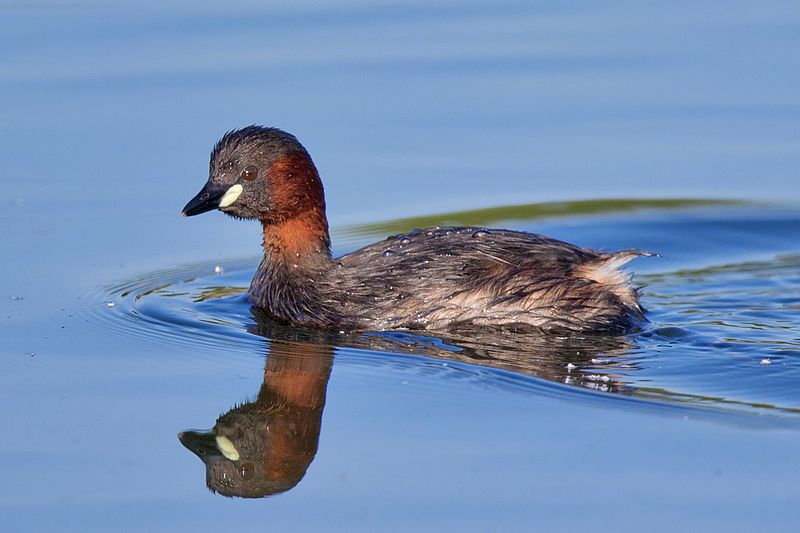
The little grebe, also known as dabchick, is a type of water bird that belongs to the Grebe family. The genus of the little grebe is derived from Ancient Greek, where ‘takes’ translates to ‘fast’ and ‘bapto’ translates to ‘to sink under.’
The specific epithet of the little grebe is ‘ruficollis,’ derived from the Latin ‘Rufus,’ meaning ‘red,’ and ‘Collis,’ which is derived from the Latin ‘collum,’ meaning ‘neck.’ Therefore, the specific epithet of the little grebe can be translated to ‘red-necked.’
| Kingdom | Animalia |
| Phylum | Chordata |
| Class | Aves |
| Order | Podicipediformes |
| Family | Podicipedidae |
| Genus | Tachybaptus |
| Species | T. ruficollis |
2. Emerald-spotted Wood Dove
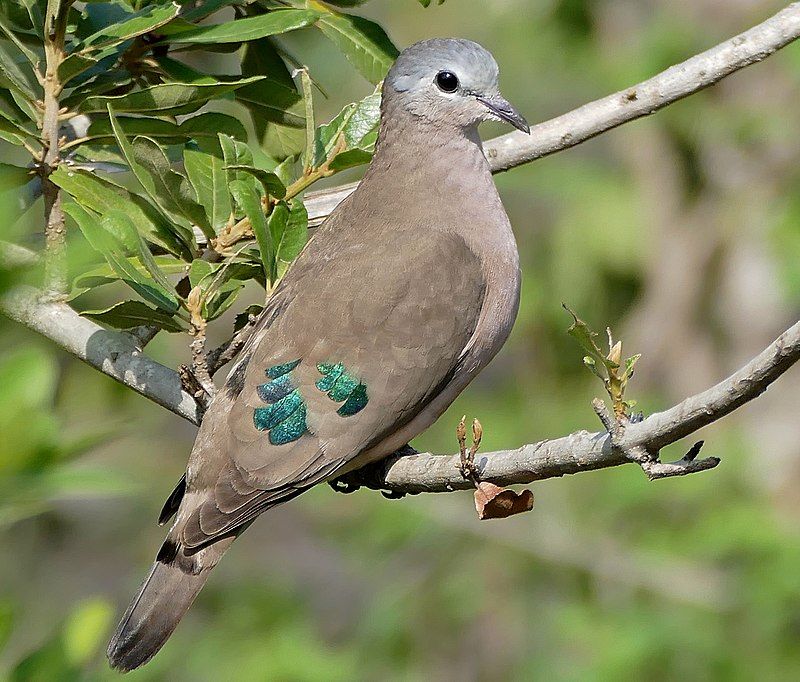
The emerald-spotted wood dove is a species of bird belonging to the family Columbidae, found in many areas of eastern and southern Africa.
This species is typically found in open, drier deciduous woodland and second-growth areas absent from evergreen semi-desert rainforests and regions.
The emerald-spotted wood dove prefers to inhabit areas with plenty of open space, allowing it to search for food and take off in flight quickly when threatened.
These birds feed on various small invertebrates, fruits, and seeds and can often be seen foraging in the grass or ground. The emerald-spotted wood dove is typical in its range but not in the evergreen rainforest or semi-desert areas.
This is likely due to the lack of available food sources in those areas and greater competition from other species that inhabit those habitats. The emerald-spotted wood dove is a medium-sized dove, approximately 25 centimeters long, with a wingspan of up to 42 centimeters.
It is easily distinguished by its bright emerald-green spots on its wings and tail. The head and back are greyish-brown, with a white throat and breast.
The bill is typically black, while the legs and feet are pinkish-red. The emerald-spotted wood dove is a species of bird that is found in many areas of eastern and southern Africa.
It prefers open, drier deciduous woodland and second-growth areas and is absent from evergreen semi-desert rainforests and regions. This species is easily identified by its bright emerald-green spots and is a medium-sized dove with a wingspan of up to 42 centimeters.
Despite its lack of presence in the evergreen rainforest and semi-desert areas, the emerald-spotted wood dove is quite common in its range.
| Kingdom | Animalia |
| Phylum | Chordata |
| Class | Aves |
| Order | Columbiformes |
| Family | Columbidae |
| Genus | Turtur |
| Species | T. chalcospilos |
3. Chestnut-bellied Sandgrouse
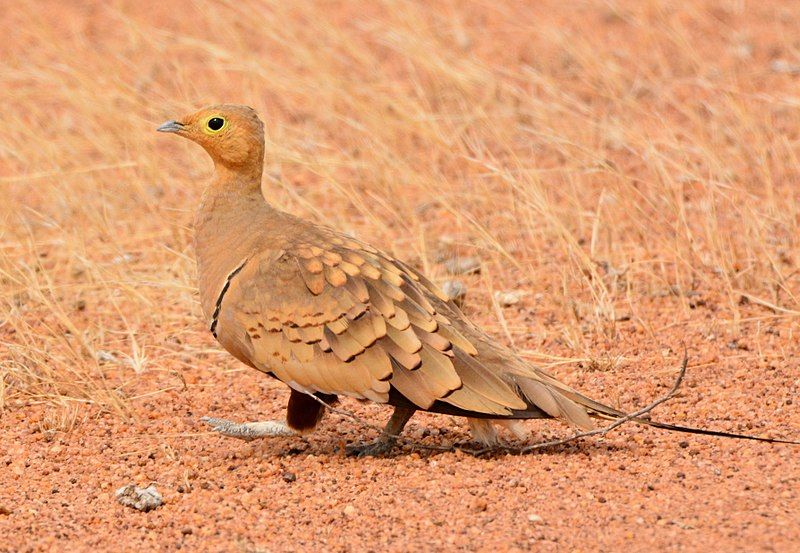
The chestnut-bellied sandgrouse, also known as the common sandgrouse, is a species of bird belonging to the sandgrouse family. It is found in many different African and Asian habitats, such as deserts, steppes, and grasslands.
This species is known to be sedentary and nomadic in its behavior, meaning it can remain in one place for an extended time or migrate to other areas as needed.
The chestnut-bellied sandgrouse has six recognized subspecies, each of which can be found in different areas of its range. The nominate subspecies, P. a. exustus, is found in northern and central Africa, while the other subspecies are found in western and southern Asia.
These subspecies can be distinguished by their physical and behavioral characteristics.
For example, some subspecies are more brightly colored than others or have slightly different mating rituals. The chestnut-bellied sandgrouse is a ground-dwelling bird that spends much time foraging for food, such as grass seeds and insects.
It is a social species, often gathering up to 150 individuals in flocks. This species is also quite vocal, usually making calls that can be heard up to a mile away.
The chestnut-bellied sandgrouse is a unique species and an essential part of the ecosystems in which it lives.
| Kingdom | Animalia |
| Phylum | Chordata |
| Class | Aves |
| Order | Pterocliformes |
| Family | Pteroclidae |
| Genus | Pterocles |
| Species | P. exustus |
4. Greater Flamingo
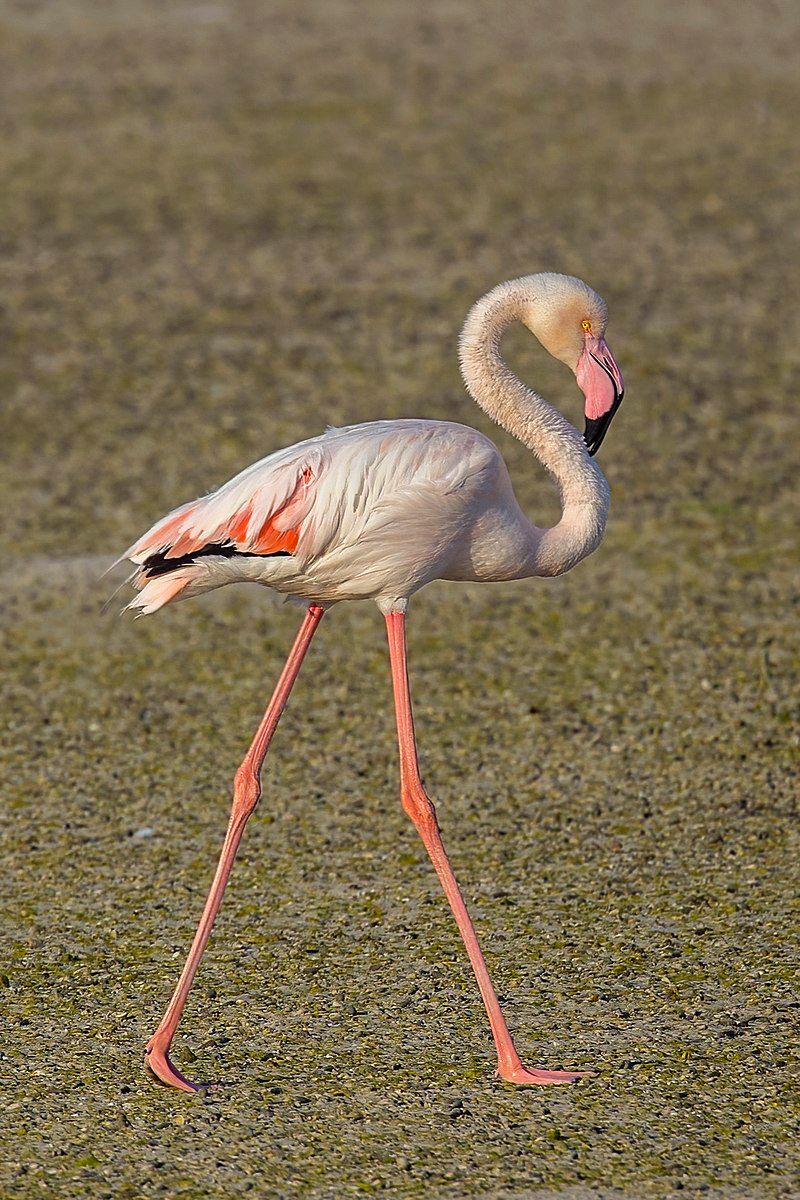
The greater flamingo is an impressive and iconic bird species in many parts of the world.
It is the most significant and most widespread member of the flamingo family. It can be seen in various habitats across Northern and Sub-Saharan Africa, India, the Middle East, and parts of Europe.
The greater flamingo can be spotted in Africa’s Persian Gulf, the Gulf of Aden, and the Red Sea. It is also found in the Middle East in countries such as the Levant and the Mediterranean countries of Southern Europe.
Furthermore, greater flamingos have been sighted in the Indian Subcontinent. These large and striking birds prefer warm, shallow lakes and lagoons with plenty of mud, as they feed mainly on small aquatic animals and algae.
They often wade in the water, using their long, curved beaks to filter out small crustaceans and other morsels. The greater flamingo is an unmistakable species known for its bright pink feathers and long, graceful neck.
Its wingspan can reach up to 1.2 meters, making it quite an impressive sight in the air. Its presence is a welcome sight in many of the places it inhabits, and it is an integral part of the ecosystems it is found in.
| Kingdom | Animalia |
| Phylum | Chordata |
| Class | Aves |
| Order | Phoenicopteriformes |
| Family | Phoenicopteridae |
| Genus | Phoenicopterus |
| Species | P. roseus |
5. Black-bellied Bustard
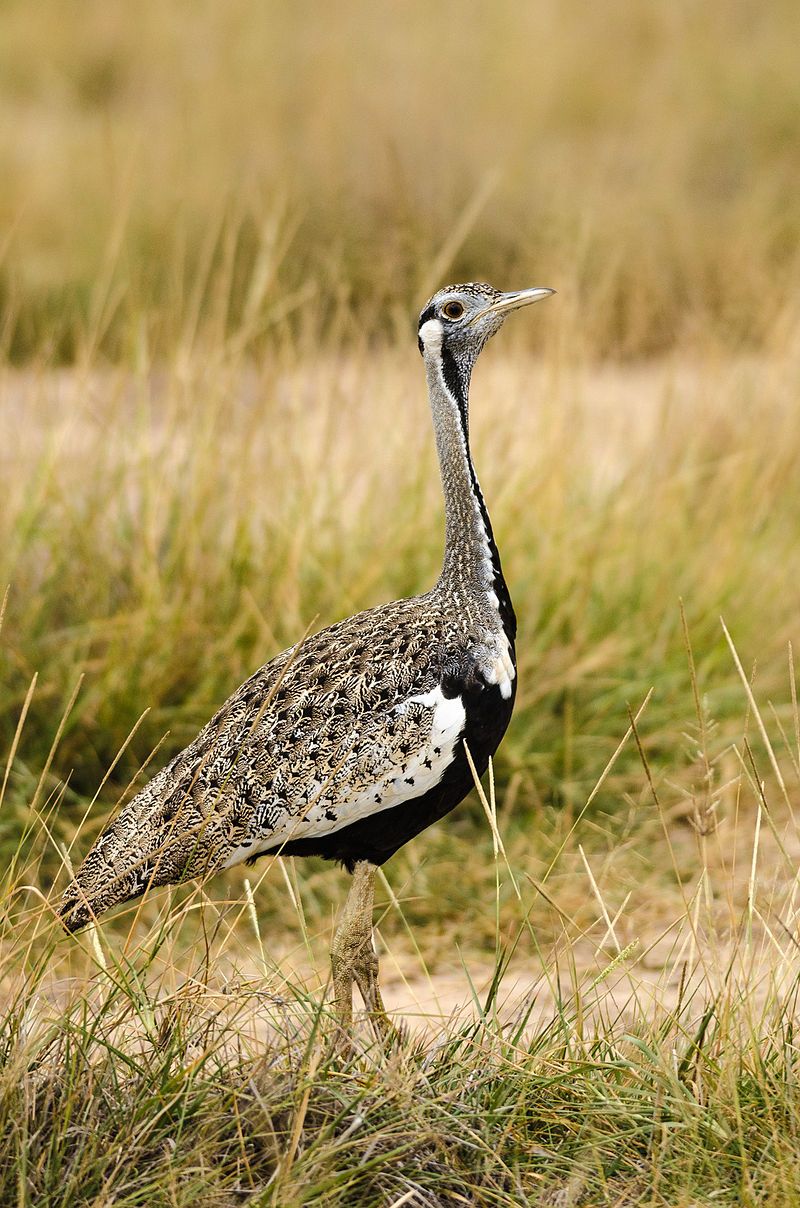
The black-bellied bustard, also known as the black-bellied korhaan, is a species of ground-dwelling bird found in Africa. It belongs to the family of birds known as bustards, a group of large, terrestrial birds found throughout the Old World.
They have long necks and legs, and their plumage is generally brown or gray. The black-bellied bustard is distinguished by its striking black belly, which sets it apart from other species of bustards.
This bird is usually found in open grasslands, savannas, and scrublands, feeding on insects, small reptiles, and plant material. They are generally solitary birds but may gather in small groups during breeding season.
The black-bellied bustard is an essential species for African ecosystems, as it helps to control insect populations and disperse the seeds of various plants.
Unfortunately, they are threatened by habitat loss, hunting, and other human activities and are listed as Vulnerable on the IUCN Red List.
| Kingdom | Animalia |
| Phylum | Chordata |
| Class | Aves |
| Order | Otidiformes |
| Family | Otididae |
| Genus | Lissotis |
| Species | L. melanogaster |
6. Great Crested Grebe
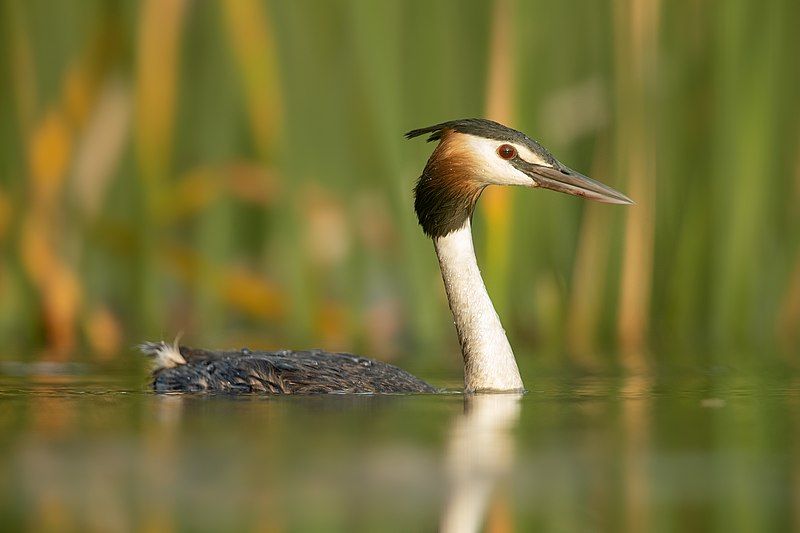
The great crested grebe (Podiceps cristatus) is a water bird native to Europe, Asia, and Africa. It is a member of the Grebe family, which includes 22 species of small, long-legged diving birds. The great crested grebe is mainly well known for its elaborate mating display.
During courtship, the birds stand up in the water, their wings spread out, and their heads and necks raised. They then move in circles and dance with their necks and bills, accompanied by calls and dives.
The display is essential to the pair-bonding process, allowing the birds to bond and form a monogamous pair. The great crested grebe is a large bird, measuring up to 70 centimeters in length and weighing up to 1.2 kilograms.
Its plumage is mainly dark brown, but its head and neck feathers are more brightly colored, with a black cap, chestnut facial stripes, and white cheeks. The birds are well adapted to aquatic life, with lobed toes that help them dive.
The great crested grebe is a well-known bird often seen in parks, lakes, and wetlands. It feeds mainly on fish but consumes insects, mollusks, worms, and amphibians. The birds nest on the water’s surface, usually in dense vegetation, and lay up to five eggs.
The young chicks can dive shortly after hatching and can do so in two months.
| Kingdom | Animalia |
| Phylum | Chordata |
| Class | Aves |
| Order | Podicipediformes |
| Family | Podicipedidae |
| Genus | Podiceps |
| Species | P. cristatus |
7. Great White Pelican
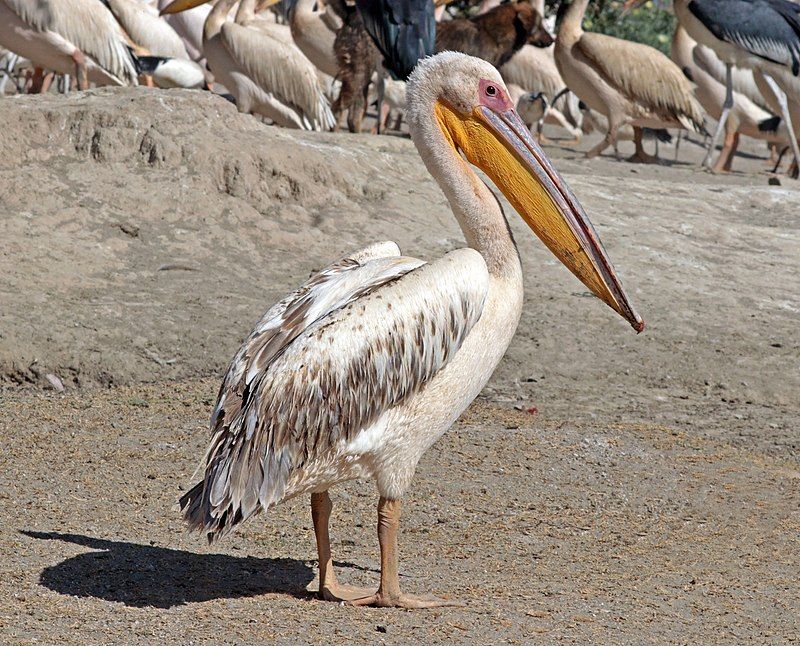
The great white pelican is a large bird belonging to the pelican family and is also referred to as the eastern white pelican, rosy pelican, or white pelican. It can be found in various regions worldwide, including southeastern Europe, Asia, and Africa.
This bird inhabits various habitats, such as swamps and shallow lakes. It is a migratory bird, so it can often be seen in multiple places throughout its range. Its wingspan can reach up to 4.5 meters, usually called the “flying circus.”
The great white pelican has a distinctive white plumage with a yellow and black bill and a blackish-gray head. Its diet consists mainly of fish, which it hunts by dipping its bill into the water and scooping up its prey.
During the breeding season, the great white pelican builds large nests in colonies near water. They are usually monogamous, and both parents share the care of the young.
The great white pelican is a majestic and awe-inspiring bird, and it is a pleasure to watch as it gracefully glides through the sky.
| Kingdom | Animalia |
| Phylum | Chordata |
| Class | Aves |
| Order | Pelecaniformes |
| Family | Pelecanidae |
| Genus | Pelecanus |
| Species | P. onocrotalus |
8. Spotted Redshank
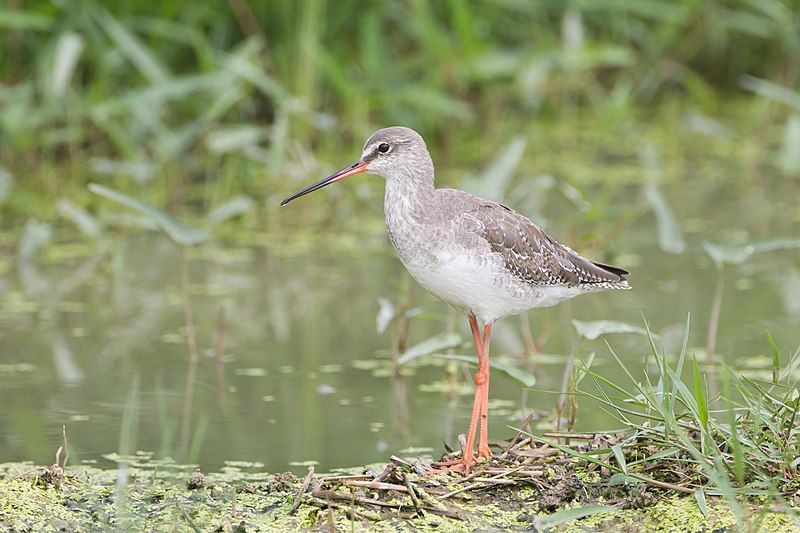
The spotted redshank is a bird species belonging to the large family Scolopacidae. It is a type of water, meaning it is a bird that typically lives in or near bodies of water.
The genus name Tringa was given to the species by Aldrovandus in 1599, based on the Ancient Greek word trunks. This word, mentioned by Aristotle, refers to a type of wading bird about the size of a thrush, which has a white rump and a habit of bobbing its tail.
The spotted redshank is an example of this type of bird known for its distinct red coloring.
| Kingdom | Animalia |
| Phylum | Chordata |
| Class | Aves |
| Order | Charadriiformes |
| Family | Scolopacidae |
| Genus | Tringa |
| Species | T. erythropus |
9. Marabou Stork
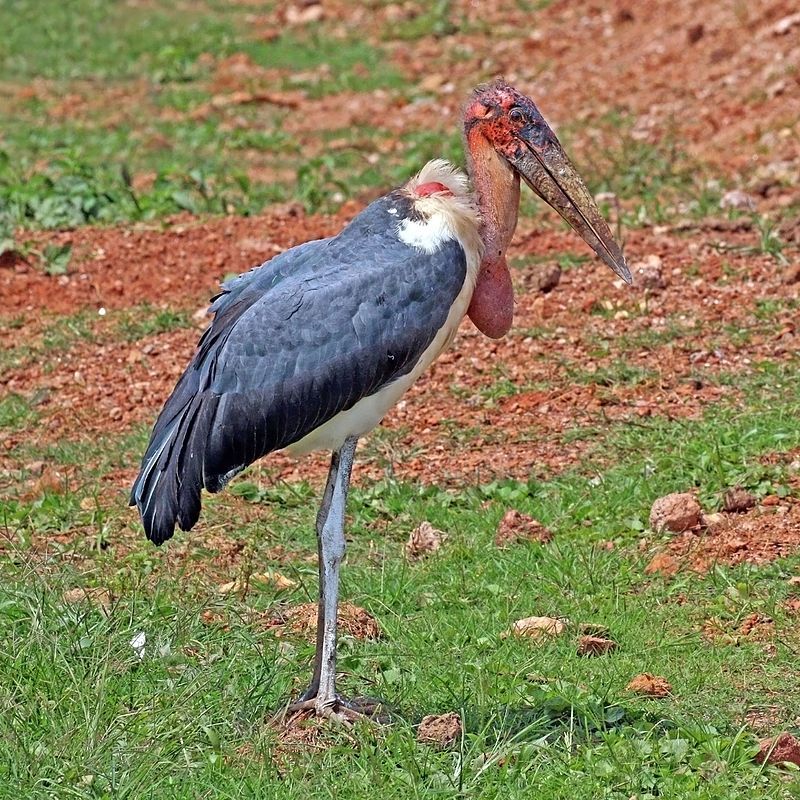
The marabou stork is a large bird of the Ciconiidae family, native to sub-Saharan Africa. It is a wading bird, meaning it forages for food in shallow water or mud.
It is a highly adaptable species, capable of living in both wet and arid habitats, and is often seen in the proximity of human settlements, particularly landfill sites. This is likely due to these areas’ abundance of food sources.
The marabou stork is a social species, often seen in groups of up to hundreds of birds. They feed on carrion, insects, small animals, and even on the eggs and nestlings of other birds.
They are also opportunistic feeders, known to steal prey from other species and scavenge from human waste. Marabou storks are also pretty long-lived birds, sometimes surviving for up to 20 years in the wild.
| Kingdom | Animalia |
| Phylum | Chordata |
| Class | Aves |
| Order | Ciconiiformes |
| Family | Ciconiidae |
| Genus | Leptoptilos |
| Species | L. crumenifer |
10. Golden-breasted Starling
The golden-breasted starling is a species of bird found in the starling family. It is a medium-sized passerine that perches rather than a wading or swimming bird.
It is easily identified by its bright golden feathers, which give it a regal appearance. The most distinctive features of the royal starling are its yellow head and breast and black and white striped back and wings.
It is a relatively common species in wooded areas, gardens, and grasslands across much of Sub-Saharan Africa. The royal starling is a sociable bird, often seen in small groups or flocks.
They feed on various insects, grains, and fruits and can often be seen visiting bird feeders or foraging in gardens. In addition, they are known for their beautiful songs, which are said to be the most melodic of all starlings.
The golden-breasted starling is an important species to the ecology of its region, and its presence is a sign of a healthy environment.
| Kingdom | Animalia |
| Phylum | Chordata |
| Class | Aves |
| Order | Passeriformes |
| Family | Sturnidae |
| Genus | Lamprotornis |
| Species | L. regius |
Conclusion
Birds in Wajir are essential to the local wildlife, providing food, beauty, and many other benefits to the local community.
The diversity of species and their habitats provide a unique opportunity to observe and study the natural world in this region.
It is essential to protect and conserve the birds of Wajir so that future generations can continue to enjoy the beauty and benefits of these fantastic creatures.